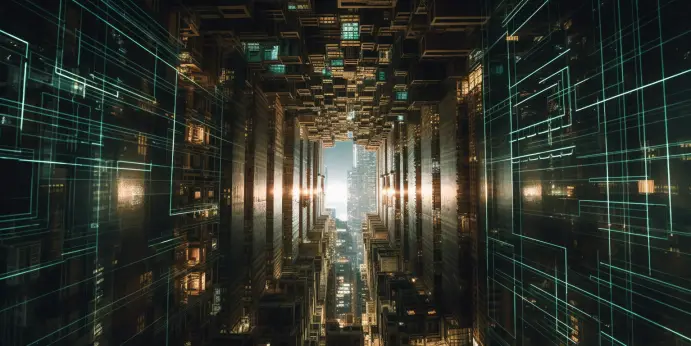Generative AI Meaning:What is it and Why is it so popular?

Welcome to the dawn of a new era, where creativity and innovation are now powered by artificial intelligence. In the expansive landscape of AI, a promising subfield called “Generative AI” is making its mark. As we progress into an increasingly data-driven era, the impact of Generative AI is becoming more and more evident. But, what does it mean, and why has it become so popular? This article will take you on a fascinating journey, where we delve into the concept of Generative AI, how it operates, how it compares to conventional AI, and why it’s stirring a sensation in the technological landscape.
Table of Contents
Why is Generative AI so Popular?
Generative AI has captured the attention of the tech world for several reasons. Firstly, it allows machines to generate original content, from music, text, design concepts to realistic 3D models. This attribute allows it to be deployed across a multitude of industries such as entertainment, e-commerce, manufacturing, healthcare, and more, thereby making it immensely versatile.
Secondly, Generative AI enables automated learning and decision-making capabilities. This potential of AI to learn from data and create something new presents an exciting prospect for businesses aiming to improve efficiency and introduce innovative solutions.
How Generative AI Works
At its core, Generative AI operates through a special class of algorithms known as generative models. These models, using principles from probability theory and statistics, generate a plausible set of data as output based on the input data they’re trained on. Various techniques, including Generative Adversarial Networks (GANs), Variational Autoencoders (VAEs), and more are used to train these models, each suited to different types of tasks.
What's the Difference Between AI and Generative AI?
Artificial Intelligence is a broad term encapsulating any system that emulates human intelligence. Generative AI, on the other hand, is a subset of AI that pushes the boundary by creating novel outputs. For example, a standard AI model might predict weather conditions based on historical weather data. In contrast, a generative AI model might create a hypothetical weather pattern for an entirely new, unseen location.
With the rapid advancement in AI technology, concerns about job security are inevitable. Certain jobs, especially those involving repetitive tasks or highly structured data, are most at risk. However, roles requiring human intuition, creativity, or complex decision-making abilities, such as accountants or strategic planners, are less likely to be replaced by AI.
Is Generative AI Suitable for Investment?
Recent trends in the stock market suggest a promising future for AI. The growth potential of generative AI, in particular, is appealing to investors. While it opens up avenues for significant returns, investing in AI is not without risks. Potential investors need to consider market volatility, technological advancements, and the competitive landscape before making a decision.
What is the Future of Generative AI?
The future of generative AI looks bright and promising. Its unique capability to create novel and personalized content will only continue to evolve, opening up unimaginable possibilities across industries. However, it also presents a new set of challenges, such as ethical issues and the risk of misuse. As we navigate this exciting journey, balancing the rewards with the potential risks will be crucial.
What is an Example of Generative AI?
To understand the concept more clearly, let’s delve into some examples of generative AI across three categories: chatbots, image generators, and art generators.
Chatbots
- ChatGPT: ChatGPT is an AI online Chatbot trained by OpenAI,can write and even code with in real-time. ChatGPT can understand basically all text-type commands and is the most powerful AI bot of its kind.
- Google Bard:Google Bard is a chatbot developed by Google, and its notable feature that distinguishes it from other chatbots is its ability to respond and engage in conversations using poetry.
Image Generators
- Midjourney:It uses Stable Diffusion as its base and allows users to input a text description to quickly generate a picture that matches the scene described. Users can provide feedback and refine the generated picture until they achieve the desired effect.
- DALL-E: Developed by OpenAI, DALL-E generates original images from textual descriptions, demonstrating the creative potential of generative AI.
Art Generators
Conclusion
Generative AI is poised to revolutionize how we interact with technology. Its creative capabilities are redefining the boundaries of what is possible, from art to design to text generation. But as we venture into this brave new world, it is essential to tread carefully, taking into account the ethical implications and ensuring a future where technology serves humanity, not the other way around.

